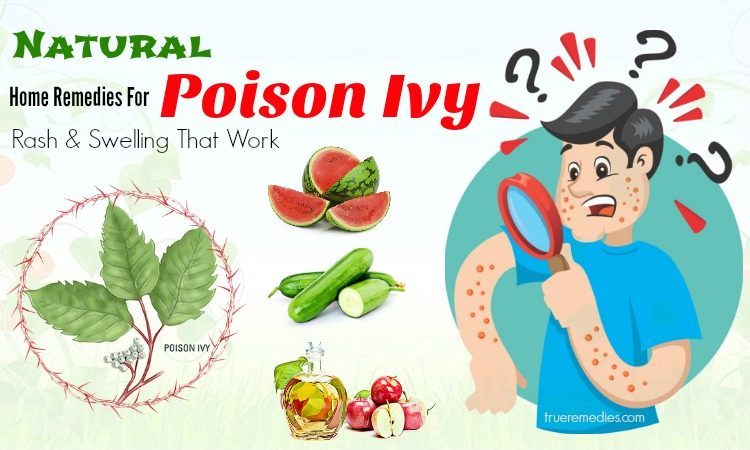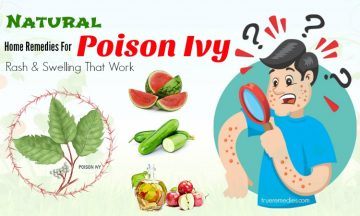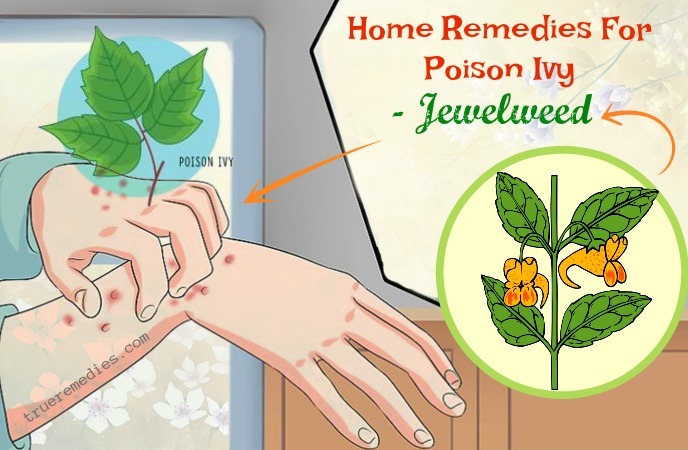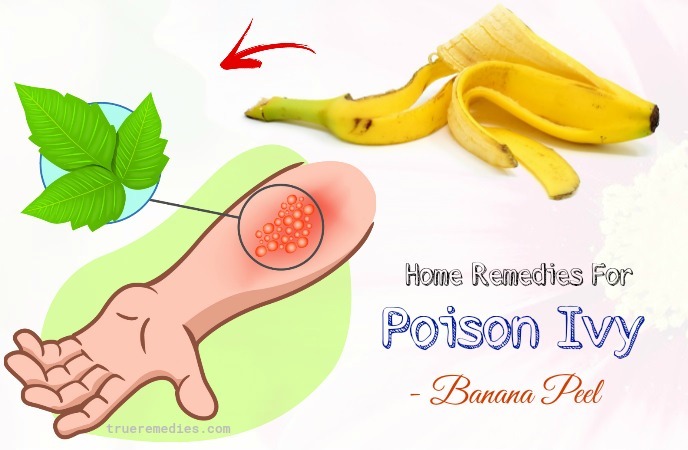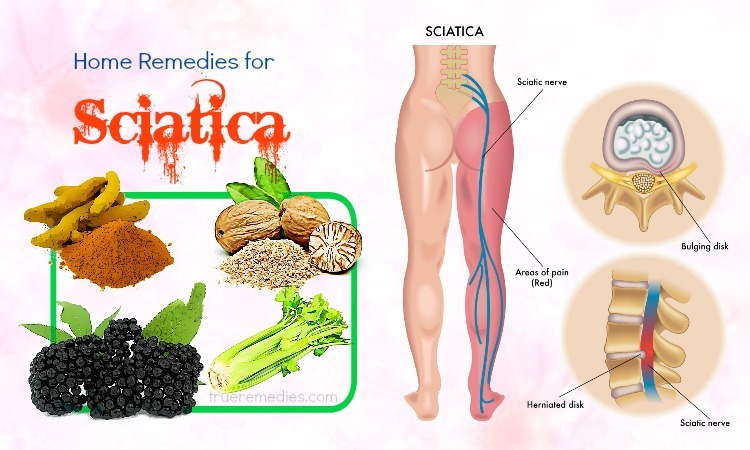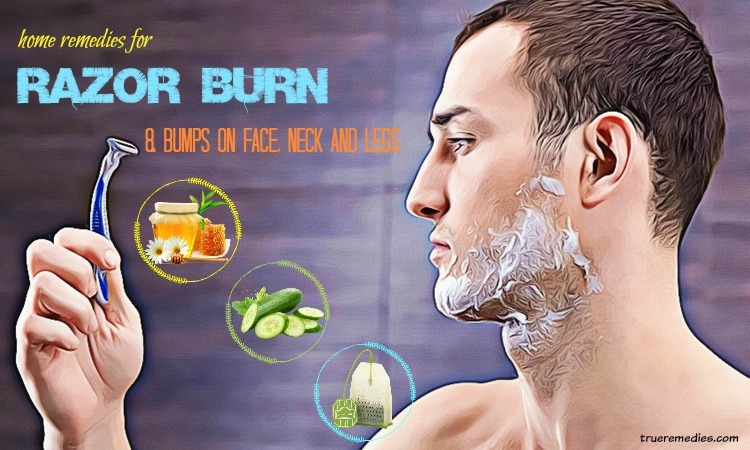updated: 06/20/2019
Contents
What Is Poison Ivy?
It is important to be in the nature. Trees are around us and some of them are so friendly to all of us while others are not. Some kinds of trees cause allergic reactions to us. Ivies are among them. Some of us are allergic to urushiol oil contained in ivies.
In general, poison ivy is defined as a kind of allergy in which the patients being exposed to the oil of ivies are allergic. Ivies are around us. So the risk of suffering from poison ivy is very high. Actually, poison ivy is a toxic plant commonly found in most areas of the U.S. When contacting with the human skin, poison ivy will lead to a rash, aka contact dermatitis. It may develop into increased swelling, redness and blisters, which are painful or itchy.
The urushiol is an oily resin that is found in the stems, roots, and leaves of poison ivy. It is odorless and colorless. This substance sticks to different types of surfaces, such as pet fur, clothing, skin and outdoor equipment and tools. Most people are often susceptible to allergic contact dermatitis after contacting poison ivy and just 15% of people will not get any allergic reaction, in accordance with the American Skin Association. However, nobody is born allergic to poison ivy.
Poison ivy is not contagious, if there is not oil from this plant on your complexion. It could be spread to other surfaces.
What Are Causes Of Poison Ivy?
As mentioned above, it is urushiol called oil that causes us to get poison ivy rash and swelling. A reaction to urushiol could occur when you contact directly with contaminated objects like shoes after having a walk, or from inhaling in the smoke from burned poison ivy.
Whenever you touch its leaves, roots or stems which contain the oil, you can easily suffer from poison ivy.
TrueRemedies Partner Solutions

Need a Help from the Leading Expert Online, Available 24/7?
They’re all here and ready to answer your questions online or by phone. Keep asking questions until you get the answer you need.
What Are The Symptoms Of Poison Ivy?
When you is exposed to this plant, a swelling or rash could happen from 12 to 72 hours after exposure. If you suffer from poison ivy, you may experience the following symptoms:
- Having blisters
- Feeling painful
- Having inflamed, swollen skin.
- Having slight fever
- Having red bumps, named papules
- Having crusting skin
It may take a few weeks for the skin rash caused by poison ivy to heal.
What Are Risk Factors?
People who are the high risk of poison ivy reactions are often exposed to this plant. They usually work in outdoors or their jobs require them to work outdoors.
Such jobs include gardeners, farmers, foresters, construction workers, and landscapers.
Besides, pets are also susceptible to the toxin from poison ivy, so they should also be kept away from this plant where possible.
When To See A Doctor?
If a person has signs and symptoms of poison ivy, it is crucial to seek instant medical attention:
- Swollen tongue
- Trouble swallowing and breathing
- A rash that covers your genitals, face, and most body parts
- Swelling eyelids
Sometimes, a serious allergic reaction may happen in the throat, nasal passages, and lungs. They might have trouble breathing. In case a patient stops breathing, urgent medical care is essential.
If you suffer from poison ivy and they make you so painful, you should spare a little of your time for reading the home remedies for poison ivy in our article “17 Home Remedies For Poison Ivy Rash And Swelling That Work”. Please read through our article below. Take a look at TrueRemedies.com. However, if you see no improvement, it is time for you to go to see your doctor.
Top 17 Effective Home Remedies For Poison Ivy Rash And Swelling That Work
1. Dish Soap
As to any case of allergy, the first thing you need to do is removing the allergen as soon as possible to prevent from further effects. Therefore, washing with dish soap is among the simplest home remedies for poison ivy. It is important to keep in your mind that the urushiol oil contained in ivies can penetrate your skin within less than 15 minutes of being exposed to the plant. So, if you accidently touch the oil, you should wash it off right away. The sooner you eliminate it, the lesser chance of it spreads to other skin areas. As urushiol is an oily substance, a quality agent, which can cut grease, is perfect to eliminate it from your skin surface before it can penetrate into your skin. Ideally, you should also remove all clothes and dip them in the soapy water.
In case you are living near the forests where poison ivy is regularly seen, fix the outdoor shower is a smart idea. Opt for cold water than warm water in this case, as the warm water might result in more irritation to your skin on inflamed skin areas.
We will instruct you some simple steps of using dish soap for removing the oil:
Method 1:
- Take some dish soap.
- Rub it over your exposed areas.
- Use a clean cloth for gently rubbing the areas.
- Put the areas under the tap of cold running water.
Method 2:
- Prepare a tub filled with cool water.
- Add some dish soap.
- Stir them well.
- Soak yourselves in the mixture.
- Wash off by clean water.
2. Oatmeal
You can also utilize oatmeal for curing your poison ivy. This kind of cereal is not so nutritious to our health but also able to remove symptoms of poison ivy quickly. Oatmeal contains phenols as well as avenanthramides which are wonderful ingredient for reducing inflammation. It treats the discomfort and itchiness associated with poison ivy. The saponins found in oatmeal also acts as a natural cleanser that absorbs the dirt, oil and odor. Using oatmeal also balances your skin’s pH levels [1].
This tried-and-tested home remedy has been commercialized by companies which provide ready-to-use oatmeal products. But, you can totally make your homemade version from plain, uncooked oatmeal.
Here is the guide for you on how to use oatmeal for fighting poison ivy:
Method 1:
- Pour a cup of oatmeal cereals in a cloth.
- Put them in a pot of water.
- Allow it to stay on for half an hour.
- Remove the cloth out of the water.
- Squeeze it to get the milk.
- Use the milk to wash off your affected areas.
- Allow it to dry naturally.
- Put the cloth in the pot again.
- Do the same process when necessary.
Method 2:
- Pour a cup of oatmeal cereals in a cloth.
- Put them in a pot of water.
- Allow it to stay on for half an hour.
- Remove the cloth out of the water.
- Squeeze it to get the milk.
- Pour the milk in a tub filled with cool water.
- Soak yourselves in the water.
- Allow your body to dry itself.
Method 3:
- Pour an amount of oatmeal in a pot.
- Add some water to the pot.
- Turn on the heat.
- Boil it for 10 minutes.
- Remove the heat.
- Let it cool down naturally.
- Strain the liquid.
- Apply the liquid over your inflamed areas when it is warm.
- Allow it to sit on for 5 minutes.
- Wash it out by using warm water.
- Do this process once every day.
Method 4:
- Add 2 tablespoons of oatmeal powder to a tube filled with warm water.
- Soak yourselves in the water.
- Be in the tub for half an hour.
Method 5: Oatmeal and salt
This process will help with skin rash and remove infections caused by toxic weeds.
- Mix ground oatmeal with salt and add them to warm water to create a thick paste
- Apply it over your rashes
- Wait for 30 minutes to rinse it off with water
- Repeat this method twice per day
Method 6: Oatmeal, honey, milk
- Mix 1 whole milk, 1 cup of oatmeal powder and ¼ cup of Manuka honey together
- After stirring, apply this mixture over your skin
- Wait for 20 minutes to wash it off
- Repeat this routine twice or thrice per day
You can also add this mixture into your bath water and soak in this solution for 30 minutes before having a normal bath.
3. Apple Cider Vinegar
Apple cider vinegar also helps in this situation. Vinegar can reduce the rash as well as the itchiness due to poison ivy. Apple cider vinegar contains acetic acid which helps to eliminate a number of harmful bacteria. Also, it has antiviral, antimicrobial, and anti-inflammatory properties which make it a great remedy for a number of skin issues. Therefore, this ingredient can prevent the affected areas from further infection. Remember that when applying vinegar over your skin, you will sense a burning sensation, which may last for just a few minutes. It is when the vinegar does its magic. However, do not break bubbles with scratching as vinegar may intensify its stinging effect on broken skin [2].
Here is all what you need to do:
Method 1:
- Take ½ cup of vinegar.
- Pour the vinegar in a bowl.
- Add 1 ½ cold water to it.
- Pour the mixture in a tube filled with cool water.
- Soak yourselves in the water.
- Do this process several times every day.
Method 2:
- Take ½ cup of vinegar.
- Pour the vinegar in a bowl.
- Add 1 ½ cold water to it.
- Dip a cotton ball in the mixture.
- Put the ball over your affected parts.
4. Lemon Juice
It seems too good to be true when it comes to home remedies for poison ivy rash and swelling. Lemon is not only good for your overall health but also one of the excellent home remedies for poison ivy that you should put in your pocket. As the same as the benefits of vinegar, lemon is effective in reducing the rash and itchy areas. By combining with some raw honey, you can alleviate your poison ivy quickly. It is because honey contains hygroscopic which contributes to preventing the affected areas from expanding.
The simple instruction below shows you how to prepare the mixture for combating against poison ivy:
- Take a fresh lemon.
- Squeeze its juice.
- Pour the juice in a cup.
- Add 2 teaspoons of raw honey to it.
- Mix them well.
- Dip a clean cotton ball in the mixture.
- Put the ball over your affected areas.
- Apply this process once every day.
5. Baking Soda
If baking soda is available at home, try using it right away. It will bring you surprising effects. We cannot deny the significant benefits of baking soda in curing a number of health problems. If you accidently touch ivies and suffer from poison ivy, baking soda helps to soothe affected areas, reduce the pain as well as inflammation due to poison ivy. It is because baking soda is an acid neutralizer that can metabolize the acid in urushiol oil, thereby decreasing the intensity of skin rashes. It also pulls out all fluids and other toxins from blisters associated with poison ivy, thereby making the blister dry faster.
Also known as sodium bicarbonate, baking soda has the ability to balance pH levels of skin, giving a relief from itching and preventing infection’s spread. Thanks to the anti-inflammatory property, baking soda can accelerate the healing process of blisters and alleviate swelling and pain naturally.
Here is the instruction for you:
Method 1: Baking soda Bath
- Take a tablespoon of baking soda.
- Pour it in a bowl of cool water.
- Stir them well.
- Wash your affected areas with the mixture.
- Do this process once every day.
Method 2: Baking soda compress
- Take a tablespoon of baking soda.
- Pour it in a bowl of cool water.
- Stir them well.
- Dip a clean cotton ball to the mixture.
- Apply the mixture over your affected areas.
Method 3: Baking soda paste
- Pour an amount of baking soda powder.
- Add sufficient water to form a thick paste.
- Apply the paste over your affected parts.
- Let it stay on for several minutes.
- Let it dry naturally.
- Wash it off with cool water.
Method 4: Baking soda and oatmeal
- Cook some oatmeal and let it cool down a little bit
- Mix it with 1 teaspoon of baking soda, stir well
- Apply the mixture over your affected skin
- Wait for 25 minutes to rinse it off with water
- Repeat this routine twice per day
Method 5: Baking soda and vinegar
- Mix 3 teaspoons of baking soda with some apple cider vinegar to get a thick paste
- Apply the paste over your skin and scrub gently
- After a few minutes, rinse it off with water
- Repeat this routine daily
Method 6: Baking soda and black coffee
Thanks to anti-inflammatory property of chlorogenic acid found in coffee, this ingredient can be mixed with baking soda to soothe your irritated skin and promote healing time.
- Mix some of cold black coffee with ½ cup of baking soda to get a thick paste
- Apply this paste over your affected areas and wait for a few minutes to let it dry
- Repeat this routine twice or thrice per day
Note: Do not apply baking soda on the rashes on genitals, eyes, mouth or other sensitive skin areas.
6. Jewelweed
Jewelweed is the second remedy that you should try when suffering from poison ivy because it is called a natural antidote for poison ivy. You can use either its leaves or stems because both are so beneficial in reducing the allergic reaction of poison ivy. Jewelweed has compounds that either counteracts the urushiol in poison ivy or the response of our bodies to this allergen [3] [4] [5].
This plat is also a good home remedy for other skin disorders like ringworm, warts and eczema.
Here is some suggestion for you on how ot use jewelweed for treating poison ivy:
- Take some fresh jewelweed leaves.
- Wash them thoroughly.
- Put them in a blender.
- Extract its juice.
- Pour the juice to your affected areas.
7. Cucumbers
Cucumbers are often used as cooling skin mask for most women thanks to their great benefits to our skin. It also plays a role as an effective remedy for poison ivy. Due to the cooling property, cucumbers are so beneficial in relieving the inflammation caused by poison ivy. They will reduce the itchiness as well as keep your skin moisturized.
Here is the instruction for you:
Method 1:
- Take a fresh cucumber.
- Wash it thoroughly.
- Chop them into thin slices.
- Put the slices over your affected areas.
- Do this process once every day.
Method 2:
- Take a fresh cucumber.
- Wash it carefully.
- Chop them into small slices.
- Put them in a blender.
- Turn on a blender to form a paste.
- Put the paste over your inflamed areas.
- Do this once daily.
8. Watermelon
Having the same benefits to poison ivy as cucumbers, watermelon is considered as one of the home remedies for poison ivy among fruits. Its benefits lie in its rind. The pulp contains phytochemical called ingredient which helps to alleviate inflammation as well as to reduce the pain.
It can be prepared in several ways as below:
Method 1:
- Take a small watermelon.
- Use a knife to grate its rind.
- Put the rind over your affected areas.
Method 2:
- Take a watermelon.
- Cut it into half.
- Use a spoon to get its pulp.
- Put the pulp in a blender.
- Turn on the blender to form a paste.
- Put the paste on your inflamed parts.
9. Aloe Vera
It is not surprising that aloe vera is listed as one of home remedies for poison ivy. This plant has a number of benefits to our skin, especially combating against the inflammation and the rash due to poison ivy. Despite aloe is about 95% water, the rest of it has a concentrated mix of amino acids, essential oils, enzymes, vitamins and minerals, polysaccharides, glycoproteins, lectins, anthraquinones, and anti-inflammatory fatty acids. According scientists, these compounds contribute to the effectiveness of aloe vera for treating wounds, burns, insect bites and skin rashes. Among discovered compounds, acemannan has been found to help the immune system by increasing the quantity of T-lymphocyte cells (aka T-cells), supporting the natural resistance of our bodies to a variety of illnesses [6] [7] [8].
We will suggest you some ways of preparing aloe vera for treating poison ivy:
- Take an aloe vera leaf.
- Use a knife to let it open.
- Extract its gel.
- Pour the gel into a bottle.
- Put it in a refrigerator for storing it.
- Pour a small amount of gel on your affected areas.
10. Goldenseal
Goldenseal roots are suggested for treating some symptoms of poison ivy rash and swelling, including rash and inflammation thanks to its strong ability to fight inflammation as well as microbes. The powdered root and tincture of this plant could be used in the affected skin area. The antimicrobial and anti-inflammatory action of this herb will calm down rashes and blisters while preventing any secondary infections.
All you need to do is as below:
Method 1:
- Take a teaspoon of goldenseal root powder.
- Pour it in a bowl.
- Add some hot water to the bowl.
- Allow it to steep for 10 minutes.
- Let it cool down naturally.
- Dip a clean cotton ball in the mixture.
- Apply it on your affected parts.
Method 2:
- Take ½ teaspoon of goldenseal root which is ground into powder.
- Put it in a glass.
- Pour some warm water into it.
- Stir them well.
- Consume the tea once every day.
11. Witch Hazel
Witch hazel is also listed as one of the best home remedies for poison ivy. It is especially safe in using for young kids. This ingredient will give a hand in soothe the itchy areas as well as inflammation caused by poison ivy thanks to astringent property. Wherever you have a skin rash, you can apply witch hazel. The soothing, cooling extract will not remove the rash totally, but it could calm it down.
12. Himalayan Salt
Himalayan salt is a kind of salt that contains sodium chloride as well as some essential minerals. Its sulphur compounds in the salt give it a peculiar smell as well as taste if dissolved in water. Himalayan salt has been used as a natural skin toner and detoxifier for many centuries. The antihistaminic property of Himalayan salt is famous, which can be the major reason it supports poison ivy rash. The sulfur content also contributes to it. This salt is commonly used to treat some skin problems for a long time. Plus, it is the antihistaminic property that helps to alleviate the rash due to poison ivy.
Below is the simple guide for you:
- Put a teaspoon of Himalayan salt.
- Add a cup of clean water to it.
- Stir them well.
- Dip a cotton cloth in the mixture.
- Put it over you affected skin.
- Allow it to sit on for 15 minutes.
- Do this every day.
13. Banana Peel
Banana has a number of benefits to our health. It may sound strange, yet many old-wives tales swear by the benefit of a banana peel for getting rid of the annoying symptoms of poison ivy. Thanks to its cooling property, bananas can reduce the itching areas and the inflammation caused by poison ivy, especially blisters caused by poison ivy.
Here is the very simple instruction:
- Take a ripe banana.
- Peel it.
- Rub the inside peel of the banana over your affected skin.
- Apply this remedy thrice every day.
14. Alcohol
Drinking too much alcohol is very harmful to our health. As we all know, consuming a moderate amount of alcohol can be healthy for our body. Firstly, it helps us to prevent he rirk of suffering from heart disease. Secondly, alcohol is a good thing to disinfect wounds, inflammation. It also helps to soothe the inflammation as well as alleviate the itchy areas. In addition, it contributes to preventing the inflamed skin from being further contaminated.
All you need is to follow the instruction here:
- Take a small amount of alcohol.
- Pour it over your affected areas.
- Cover these areas with a sterile bandage.
15. Acorns
Acorns are also considered as one of the excellent home remedies for poison ivy swelling that you should not miss out. As we all know, acorns are the fruits of oak plants. They are the favorite ones for squirrels. They are not only a cheap but also a healthy one for us. Being as a nut, acorns are rich in fiber which is very good for our digestion, including alleviating diarrhea. Secondly, they have a high content of unsaturated fat which helps to reduce our cholesterol levels as well as combat against heart diseases. As to some skin problems, they are so effective in alleviating rashes, minor burns or itching due to allergic reactions. Plus, owning the power to combat against viruses, acorns are beneficial in reducing the affected areas. Therefore, it is so wonderful if you utilize acorns in reducing your symptoms of poison ivy.
Here is a very simple instruction for you:
- Take an amount of fresh acorns which are cracked.
- Put them in a pot.
- Add some water to the pot.
- Turn on the heat.
- Boil the mixture for a few minutes.
- Let it steep for 5 minutes.
- Strain the liquid and let the liquid cool down naturally.
- Dip a clean cotton ball in the liquid.
- Apply it to your inflamed skin.
- Apply this remedy thrice every day.
16. Buttermilk
Buttermilk may be one of the nutritious milk that you should consume every day. Thanks to high level of protein, buttermilk is a wise option for you if you are suffering from poison ivy. In addition, it has plenty of other essential minerals. That is the reason why it can be considered as a wonderful remedy for a number of health problems, such as boosting digestion, preventing the risk of diabetes as well as treating insomnia. Plus, it works well for some skin problems, including fading out wrinkles as well as treat sunburns, etc. Another benefit of the milk is that it will dry out the fluids coming from blisters as a result of poison ivy. Plus, it owns a strong soothing power which gives a hand in alleviating your itchy areas.
The things you need to do is very simple:
Method 1:
- Take an amount of buttermilk.
- Add the equivalent amount of vinegar as well as salt.
- Pour all ingredients in a bowl.
- Mix them well.
- Rub the mixture over your inflamed areas.
Method 2:
- Prepare a bowl.
- Pour some warm water in.
- Add an amount of butter milk to it.
- Mix them well.
- Wash your affected skin with the mixture.
17. Cold Compress
We have to admit great benefits of cold compress for inflammation and wounds. This way helps to alleviate the swelling and pain. Cold compress is among one of the next simple home remedies for poison ivy swelling and rash. If you use this application soon after you expose to ivies, you can reduce the affecting level caused by the oil of ivies. This remedy significantly contributes to soothing the itchy areas.
You can apply this remedy in several ways below:
Method 1:
- Pour cold water in a bowl.
- Take a clean cotton cloth.
- Dip it in the bowl.
- Put the cloth on your affected skin.
- Allow it to dry naturally.
- Do this process several times every day.
Method 2:
- Take a few ice cubes.
- Put them in a cotton bag.
- Tightly cover the bag.
- Compress it over your affected skin.
- Keep it sit on for several hours.
- Do this remedy several times every day.
Home Remedies For Poison Ivy – Extra Tips
It is better not to suffer from poison ivy. However, poison ivy can be everywhere. You can easily touch them.
Here are some of the tips for you to avoid suffering from this problem:
- Avoid touching them
- Do not prick or pop the blisters as it may spread the infection.
- Wear long-sleeved clothes as well as long trousers.
- Also wear gloves, your socks when you are near poison ivy
- Whenever contacting with this plant, remove your clothes and other things and wash them in water.
- Learn how to identify the poison ivy and poison oak and stay away from them
- Do not burn poison oak plants because its smoke is dangerous if inhaled.
- If none of the methods above work, consult your doctor instantly
Did I miss any home remedy for poison ivy symptoms?
As you can see, the article provides you with some best home remedies for the poison ivy. Are you satisfied with 17 home remedies for poison ivy which introduced here? It is very easy to follow the instructions on how to prepare these remedies. If there are any concerns about the remedies mentioned in our article of “17 Home Remedies For Poison Ivy Rash And Swelling That Work” presented in Home Remedies Category. Please don’t hesitate to leave your comments and ideas. We will try to give the feedback to you as soon as possible.

